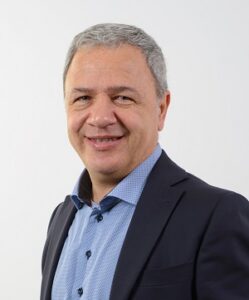 Investment in a programme of clinical trials will underpin Boston Scientific’s strategy to expand the uptake of its Watchman left atrial appendage closure (LAAC) device, the company’s global vice president and general manager for the Watchman system, Angelo De Rosa, has told Cardiac Rhythm News.
Investment in a programme of clinical trials will underpin Boston Scientific’s strategy to expand the uptake of its Watchman left atrial appendage closure (LAAC) device, the company’s global vice president and general manager for the Watchman system, Angelo De Rosa, has told Cardiac Rhythm News.
De Rosa took over the Watchman team within Boston in September 2023, shortly before the latest generation Watchman FLX Pro gained US Food and Drug Administration (FDA) approval. The company is also pursuing CE mark for the FLX Pro system, which is anticipated in 2025, and also hopes that a change in treatment guidelines could stimulate adoption of the device outside of the USA, where operators have been quicker to implement the therapy.
Watchman is indicated to reduce stroke risk in patients with non-valvular atrial fibrillation (AF) who need an alternative to oral anticoagulation therapy. The latest iteration, Watchman FLX Pro, features a polymer coating, designed to reduce the risk of device-related thrombus (DRT) post-implant, as well as radiopaque markers to aid positioning using fluoroscopy, and a larger sizing to allow the treatment of a wider range of patients.
“Watchman is by far one of the most studied devices in the medtech field, because the level of investment and the number of trials that the device has gone through is significant,” De Rosa comments, citing the existing body of data that has been collected to support the safety and efficacy of the device to date. Boston Scientific is backing a series of further trials as it seeks to expand the therapy, he tells Cardiac Rhythm News, with a goal to inform future European guidelines on the management of AF, expected to be updated in 2028. Recent US guidelines have upgraded the class of recommendation for LAAC to level 2a.
Coming down the pipeline are a number of trials aimed at boosting the evidence base for Watchman, the first of which is the OPTION trial, a 1,600-patient trial comparing Watchman to oral anticoagulation for stroke protection in patients with AF who have had an ablation or will have one during their LAAC procedure. Results of OPTION are expected late this year.
“It is really a milestone trial and we are pretty optimistic that the trial will open more electrophysiologists to the Watchman therapy but we already have a massive demand for what we called either sequential or concomitant procedures,” De Rosa comments.
“Really this will open the door for the question, if OPTION is positive, ‘what if we do the two procedures at the same time?’ which would be best for the patient, best for the hospital in terms of resource utilisation, it will be the best of both worlds.”
Coming after OPTION is CHAMPION-AF, which is studying Watchman FLX as a first choice option versus anticoagulants for AF patients who are able to tolerate long-term anticoagulant use, but would consider a one-time, device option for stroke risk reduction.
“At the same time we are also working with the Canadian Population Health Research Institute (PHRI) on the LAAOS-4 trial, which is a large randomised clinical trial evaluating whether the highest-risk patients benefit from a combined Watchman and oral anticoagulant therapy, and we plan to initiate another trial called SIMPLAAFY, which will look at a simplified post-procedural drug regimen for the Watchman FLX Pro device,” comments De Rosa.
“With a strong study pipeline, we are looking through the clinical and economic evidence and aiming to ultimately change the guidelines. The next European AF guidelines will be published in 2028, so our strategy is to have data from both the OPTION and CHAMPION-AF trials published well in advance and to combine all of the possible evidence that we can to change the guidelines at that time and elevate the level that we have today for Watchman.
Today, the Watchman device isn’t part of stroke management for many patients with AF until after they have tried all sorts of drugs and drug combinations. The issue with this is that the patient has been deteriorating while taking these medications, so you do not get the biggest benefit of the device. We see an opportunity to change that timing and help more patients manage their disease earlier on.”







